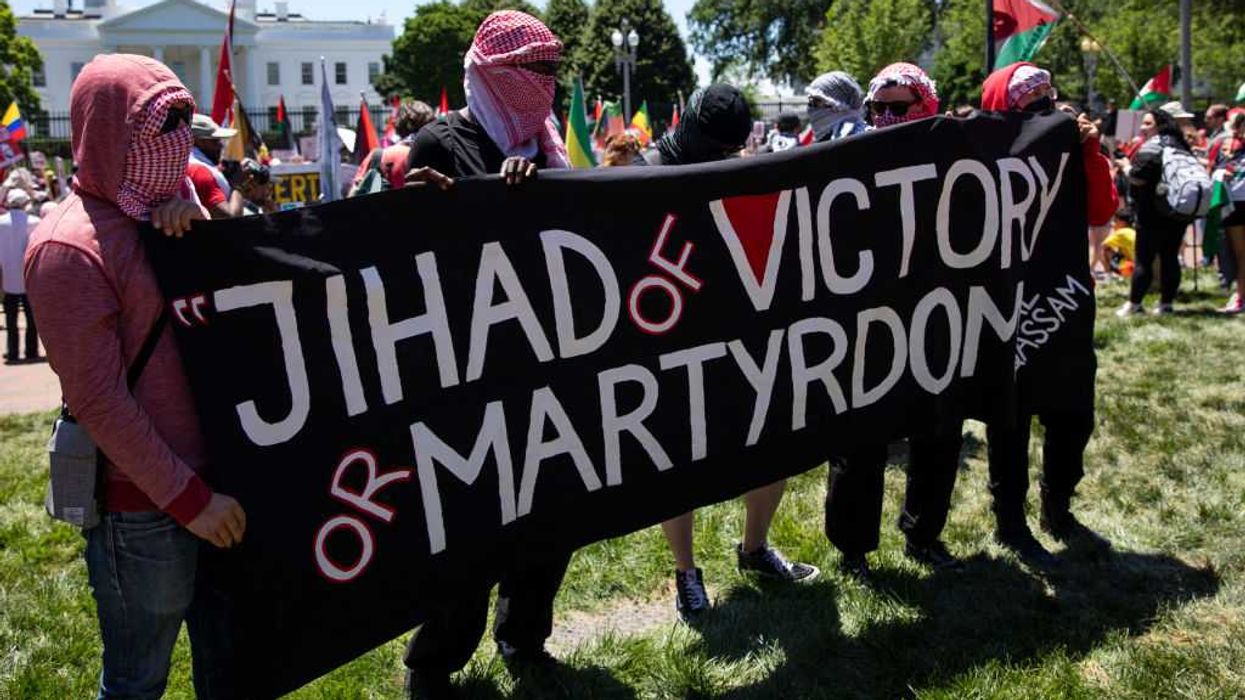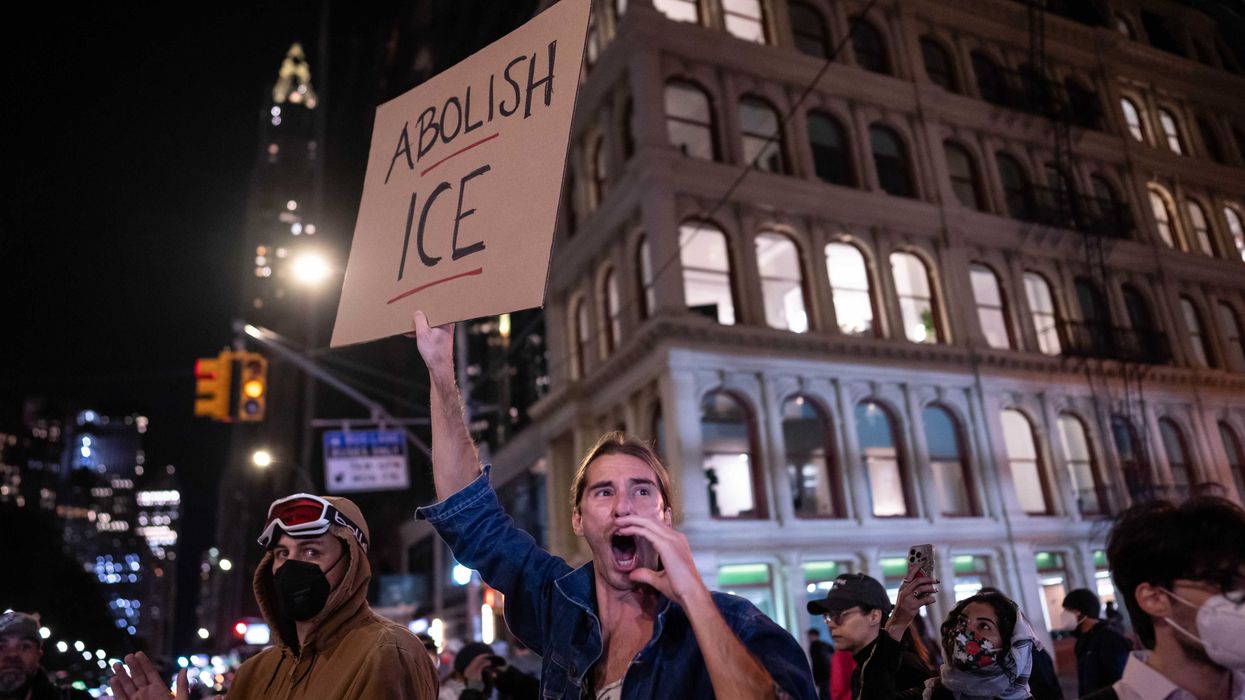GLENN: So earlier, Donald Trump came out and said he is going to -- he's going to open up the JFK files, which I think is great.
I have not heard from Rafael Cruz. I believe he has -- he is either in Canada by now, or maybe Argentina, alluding police. Because once those files come out, that show that he was clearly involved in the assassination, I think then you'll know.
But he's -- they're going to release these files, which I think is fantastic and wildly interesting for no reason than fun.
Jared Posner is a friend. An author. Case close. Lee Harvey Oswald and the assassination of JFK.
I have been good friends with one of his good friends for a very, very long time. So when this story came up, I immediately thought, what does Gerald think is in these files?
Welcome to the program, Gerald Posner.
GERALD: Glenn, great to be on with you.
As a matter of fact, our mutual friend, Mike Opelka, said the other day in a tweet that this coming Thursday, the day for the JFK files release is Christmas for all JFK researchers. And I had never thought about it that way before, but I think he's absolutely right. President Trump is giving us all -- those of us who have followed this case, a gift. The gift is every word and every document that the CIA and everybody fought for so many years to keep sealed.
GLENN: So did you think that this would come through this early? Because I thought it was like 2025 or after the next generation had died or something like that.
GERALD: Well, yeah, that's what Oliver Stone -- Kevin Costner addressing the jury saying, 75 years. Your taxpayer money. They're -- you know, they're keeping these things sealed from you.
And so people had -- we never thought we would see it in our lifetime. But here we are, they passed this law back in '92, in response to Stone's film, to say, let's get the files out. They put a 25-year-limit on it, to force these agencies to take a quarter century to get their act together. And said, whoever is president on October 26th, 2017, that's the person who has the final say, if the FBI, the CIA, or anybody else still says we want to hold on to these because there's an identifiable harm to national security, law enforcement, foreign relations. They'll appeal to the president. The president gets the right to say, yay, or nay. Does the harm outweigh the public good? And they could have never have imagined, I assure you, as you know, 25 years ago, you took a poll of their top thousand people they thought would be president, they never thought it would be Donald Trump.
GLENN: No. Running against the guy whose dad was co-assassin.
GERALD: Right. So Trump raises the assassination in the campaign. Now he's sitting as the president.
GLENN: Right.
GERALD: And the interesting thing is, I think, that we will only get these files -- if they really come out Thursday. They don't come in, in the last minute, convince them to hold back a few. Because it is Trump. If this had been Obama, even Bush the younger, Clinton, they were sort of system people, who followed the roles of freedom of information. They would have listened to the agency saying, you can't disclose this name because it's going to embarrass somebody in Mexico. Help the CIA.
When Trump tweeted on Saturday that these files are coming out, it was a great sigh of relief. I think he's the only person who is president since Kennedy who would have actually released them all.
GLENN: So what do you think is in there? For the average person. I mean, don't care if there's somebody in Mexico that the CIA wants to protect that I've never heard of. I --
GERALD: Yeah. No, I get it.
GLENN: What's in there that we would care about?
GERALD: Okay.
So the first thing is. Is there a blockbuster -- to use a bad term for the Kennedy assassination. Is there a smoking gun? Is there some document that shows Jay Edgar Hoover, handwriting the escape route for Oswald? No.
The reason I say that adamantly or with such confidence is -- and you get this completely -- if there had been a massive plot at the highest government levels, the last place you're going to find evidence of it is 25 years later in the national archives.
GLENN: Right. I mean, what's his name, Sandy Berger took those out in his underpants long ago.
GERALD: Absolutely. I mean, it's just fantastic to think they pulled off the perfect crime in Dallas 54 years ago, but somebody who was responsible for burning the documents forgot and left them in the backyard.
GLENN: Right. Right.
GERALD: So we're not going to get that. But what we will find that I think will be of interest is Oswald visited Mexico City, only seven weeks before the assassination. And not just as a tourist to have -- you know, stop by and have some Mexican food. He visited to get to Cuba because he convinced that was where the real revolution was taking place. He was sick of America, sick of Russia, where he had defected. And he went to the Soviet mission twice. Pulled a gun. They threw him out at one point. They thought he was a little odd, to say the least. And he went to the Cuban mission.
Now, Mexico city was a nest of spies. This was the Cold War. '63. We had the missile standoff just the year before. So the CIA was spying heavily on the Cuban and Soviet missions.
What did they learn about Oswald? Castro later boasted to somebody for the American Communist Party, that Oswald said he was going to kill Kennedy. True? I don't know. But it might be in the files.
So I do think we will find out what the CIA had learned about Oswald in Mexico City, and then what they didn't share with anybody else. Their typical MO.
GLENN: Your -- Gerald, it's been years since I've seen your book. Your theory on Oswald was, what?
GERALD: My theory on Oswald is that he is the only shooter at Dealey Plaza that day who hits anybody. So if you had five other shooters, the forensics show that the only place that Kennedy got hit was from behind. I'm convinced that that's Oswald. The tougher question, Glenn, is always, did he do it for himself, or did he do it for part of a larger conspiracy?
GLENN: Okay. So wait a minute. I want to make sure I understand the first part first. You said he's the only one that fired a shot that hit somebody. So are you saying, I don't know if there was anybody there, but if there was, it didn't matter.
GERALD: That's right. It didn't matter. That's exactly right.
So when I say Lee Harvey Oswald acting alone, that's what the evidence shows to me.
GLENN: That there's only -- he was the only shooter there?
GERALD: Yeah, that's right.
GLENN: Okay.
GERALD: Yeah. And, you know, people say -- they always say, oh, I saw somebody in the grassy knoll. And I go through all of that. Or, I saw somebody out in the text building or underneath the sewer, as Garrison, the new ordinance district attorney thought there were sewer shooters, until he went to Dallas and found out the sewer area was too small to fit somebody into the manhole cover. So, you know, the -- in the beginning, this -- the country has never believed under 50 percent, that it was a conspiracy. Meaning that even within a year of the assassination, within months of the assassination, the Gallup took a poll. I think 60 percent thought it was a conspiracy. It dropped to 50, at one point after the Warren commission. And then started to head up. It was at 90, 95 percent thought it was a conspiracy after the Stone film. And a last poll done in 2013 showed two-thirds of the American public still thought it was a conspiracy.
GLENN: So -- so I -- so we're alone? Because I don't think it was a conspiracy. Do you?
GERALD: I don't. But I do, Glenn, and I think you get this, why people believe it was -- two major factors: The first modern assassination with a rifle, from a long-distance. So people immediately conjure up Day of the Jackal.
Spy novels. You know, we're used to someone running up with a pistol, shooting at a site like with Wallace or later with -- you know who the shooter is at least.
GLENN: Sure. Sure.
GERALD: So you have a rifle assassination. The shooter gets away in the immediate aftermath. Then they pick him up. He's a 24-year-old kid who has been to Russia, trying to get to Cuba. He took a posh job at General Walker, this right-wing general who is running for the governorship of Texas. And he's killed two days later, by a guy out of Central Casting. The Dallas nightclub owner, Jack Ruby, who has potential ties to the mob, you're guaranteed you're never going to end the conspiracy theorizing on it.
GLENN: And do you expect to find anything in this about the mob?
GERALD: Yes. I do. There's as a matter of fact a file that's being held about an attorney for Carlos Marcello, who was the godfather of New Orleans. Many people think the mob was involved. Think that Marcello was kicked out of the country by Bobby Kennedy. He certainly wanted Jack Kennedy and Bobby Kennedy dead, no doubt. I just think that Oswald beat the mob to Kennedy, essentially. They would have patted him on the back and given him a medal, but he just wasn't their boy. And that attorney's file will be interesting.
You know this so well. The mob and the CIA were partners in the early '60s, trying to kill a head of state. But it was Castro. It wasn't Kennedy.
GLENN: Yes. Yes.
GERALD: And they couldn't even wound Castro. They wanted him out. I mean, we didn't want a communist 90 miles from the American shores. And the mob wanted their casinos back. Seven times, they tried to get them. The poisoned swimsuit, the exploding cigar. They can't pull it off. And how these Keystone Cops who couldn't get rid of Castro supposedly pulled off the perfect crime in Dallas, I have my doubts.
GLENN: So these come out on Thursday, Gerald? Can we have you back on, on Friday, after you've looked at all of them and tell us what you found?
GERALD: Now, there could be -- Glenn, I would love that.
They believe that although there are 3100 files, it could add up to several hundred thousand pages. But, not only am I speed reader, but I will be able to go through these files and look for the names that I know are key. So on Friday, I will give you what I call the first brush look at what comes out, of the equivalent of Al Capone's safe.
GLENN: And, hopefully, it will be a little more interesting that Al Capone's safe.
GERALD: I hope so as well.
GLENN: Gerald Posner from GeraldPosner.com. He's an investigative journalist and author of Case Closed: Lee Harvey Oswald and The Assassination of JFK. We'll talk to you Thursday, Gerald. Thanks a lot.
GERALD: Thank you so much. Bye.
STU: I don't know. The death of a president, maybe read the 100,000 pages in a day. Maybe just get it done. That's my recommendation.
GLENN: He thanks you for that.
STU: Am I asking too much? I mean, we're talking about presidential assassination.
GLENN: Easy for you to say.
STU: Get to work.

 AASHISH KIPHAYET / Contributor | Getty Images
AASHISH KIPHAYET / Contributor | Getty Images
 Harold M. Lambert / Contributor | Getty Images
Harold M. Lambert / Contributor | Getty Images Adam Gray / Stringer | Getty Images
Adam Gray / Stringer | Getty Images Anadolu / Contributor | Getty Images
Anadolu / Contributor | Getty Images